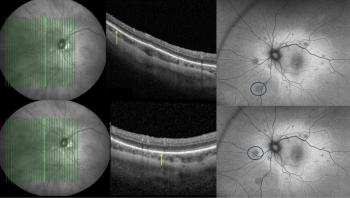
Positive preclinical data on melanocortin agonists for retinopathy
Palatin Technologies reveals groundbreaking preclinical results on melanocortin agonists, showcasing their potential to combat diabetic retinopathy and preserve vision.
Palatin Technologies recently announced preclinical data on the company’s melanocortin agonists PL9654 and PL9655.
Both agents were found to have efficacy across multiple models and routes of administration, including topical delivery, and the findings demonstrating both PL9654 and PL9655’s ability to resolve inflammation, stabilize the blood-retinal barrier, reduce VEGF signaling, and protect retinal ganglion cells – all play a role in diabetic retinopathy-associated vision loss.
Key findings:1
- Vision preservation: Both PL9654 and PL9655 maintained contrast vision and showed significant efficacy compared to vehicle.
- Inflammation control: Gene set enrichment analysis showed the downregulation of immune-related pathways in microglia and Müller glial cells for both PL9654 and PL9655 compared to vehicle.
- Retinal protection: PL9654 reduced ischemia-reperfusion-induced retinal damage, similar to the melanocortin peptide α-MSH.
- Cell integrity: Microglia and Müller glial cell levels in treated animals mirrored those in healthy controls.
- Neuroregeneration: Topical PL9655 treatment increased rod photoreceptor levels relative to vehicle.
- Anti-angiogenesis: PL9654 significantly inhibited choroidal neovascularization and fibrosis. PL9655 topical treatment also showed an increase in rods compared to vehicle.
“Palatin’s melanocortin research data are unparalleled in demonstrating multi-pathway inflammation resolution,” said Carl Spana, PhD, President and CEO of Palatin. “The ability to modulate immune response, suppress angiogenesis, and preserve neural integrity, especially via topical administration, could transform treatment for retinal diseases like diabetic retinopathy.”
Paul Kayne, PhD, Vice President, Biological Sciences at Palatin presented the data in a poster titled, “Activating the melanocortin system resolves inflammation, reduces VEGF signaling in diabetic retinopathy (DR), and provides retinal ganglion cell (RGC) protection,” during the 2025
Reference
1. Palatin Technologies, Inc. Palatin Presents Promising Preclinical Data on Melanocortin Agonists for Retinopathy at ARVO 2025. Prnewswire.com. Published May 9, 2025. Accessed May 13, 2025. https://www.prnewswire.com/news-releases/palatin-presents-promising-preclinical-data-on-melanocortin-agonists-for-retinopathy-at-arvo-2025-302450810.html
Newsletter
Keep your retina practice on the forefront—subscribe for expert analysis and emerging trends in retinal disease management.













































